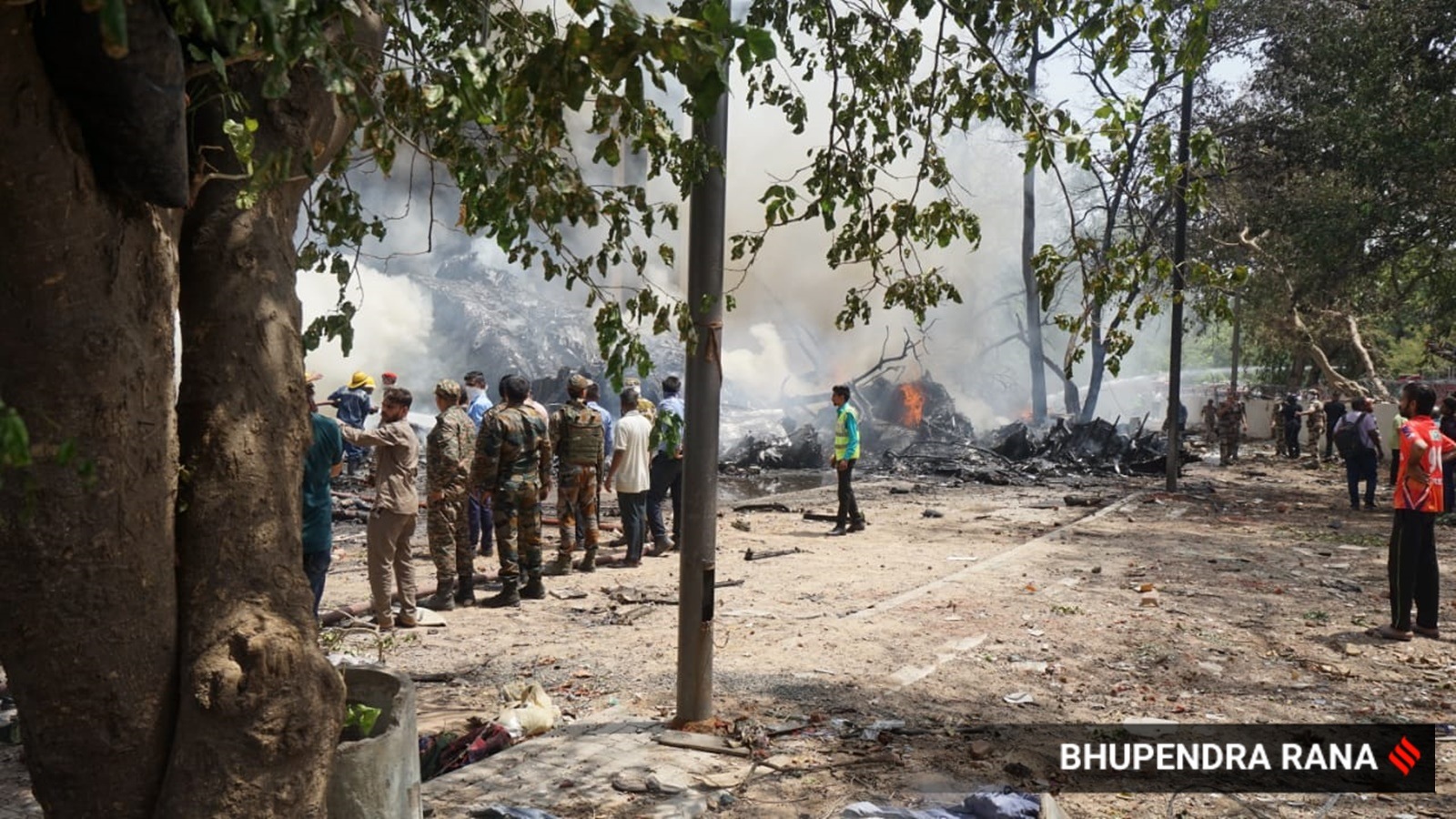The tragic crash of Air India’s Boeing 787-8 aircraft minutes after take-off from the Ahmedabad airport will be investigated by the Aircraft Accident Investigation Bureau (AAIB), an attached office of the Ministry of Civil Aviation (MoCA). The AAIB investigates all serious aircraft accidents that occur in Indian airspace, and is expected to come out with an investigation report within a year of the accident.
Top AAIB officials left for Ahmedabad immediately after the Air India aircraft with 242 people on board crashed into a residential area near the Ahmedabad airport. The 11-year-old Boeing 787 aircraft—bearing registration VT-ANB—was operating flight AI-171 between Ahmedabad and London Gatwick airport. This is the first wide-body crash for an Indian airline in four decades, the last being the bombing of Air India Boeing 747 ‘Kanishka’ in June 1985. It is also the first crash of a Boeing 787 globally.
As per flight tracking data, the signal from the aircraft was lost at an altitude of just 625 feet, moments after take-off. It then descended with a vertical speed of 475 feet per minute and crashed. According to aviation safety regulator Directorate General of Civil Aviation (DGCA), the pilots gave a MAYDAY call to the Ahmedabad airport air traffic control (ATC) upon take-off, after which it crashed outside the airport perimeter.
Initial evidence collection by AAIB
Once the rescue operations are called off, AAIB is expected to cordon off the accident site for collecting evidence, particularly perishable evidence, that may not be available later. This exercise could continue for a few days, and AAIB investigators would be expected to scrape as much evidence as possible, including the retrieval of the black boxes—cockpit voice recorder (CVR) and flight data recorder (FDR)—and other key components for detailed examination and analysis.
These initial activities would also include recording and mapping of any signs of impact with terrain and buildings, recording wreckage distribution, photography and videography of the accident site and wreckage, basic wreckage examination, witness interviews, retrieval of recorded data from on-board system equipment, GPS devices, and CCTV footage from any available source at the site. AAIB would also gather recordings and data from the ATC, radar stations, along with metrological records, and any other required data or information from the airport, airline, and other stakeholders.
Appointment of investigation team, beginning of probe
“After the preliminary stage (of evidence collection) that should last three-five days, the AAIB is expected to set up an investigation team which would ideally have representation from AAIB, as well as domain experts including pilots, engineers, and air traffic controllers. The panel is also expected to seek active assistance from Boeing, which manufactured the aircraft. The subject matter experts could be from India as well as overseas,” a senior official well-versed with the AAIB investigation procedures told The Indian Express.
According to the investigation procedure, AAIB would also notify “concerned states”—countries where the aircraft manufacturer and designer are based and where the aircraft and its operator are registered—about the accident. In the case of this particular accident, the US is likely to be the key concerned state as Boeing is an American company and the aircraft was manufactured in the US. Accredited representatives from the concerned states also join the investigation undertaken by AAIB.
Story continues below this ad
The next stage in the investigation process would involve thorough examination and analysis of the evidence and data, which would be subjected to detailed scrutiny to build an understanding of the circumstances that led to the accident and any safety issue that may have contributed to it. This stage may also involve frequent meetings with airline officials to discuss safety issues that might have come to light.
“Documents and Records gathered from the Operator, Regulator, involved Personnel or other stakeholders are studied and analysed by the Investigators and reviewed in association with SMEs, if required. The results from the analysis of Flight Recorders Data, examination of any components or other Reports from specialists are studied and may require deliberation with different stakeholders,” the AAIB explains on its website.
Preparation of investigation report
After examination and analysis of all available evidence is complete, the investigation team drafts the report to include all factual information, analysis, conclusions, and safety recommendations in line with the format prescribed by the International Civil Aviation Organization (ICAO).
“During the drafting of the report it may be necessary to revisit the evidence collection or examination and analysis phases of an investigation. The drafts are reviewed amongst all Investigation Team members and SMEs (subject matter experts) engaged during Investigation,” the AAIB says.
Story continues below this ad
The draft report is then shared with “concerned states”, seeking their comments, which are then reviewed to make any necessary changes in the report. Following this, the draft report is submitted to the Director General of AAIB for acceptance.
“If during consultation or review any issue is identified that may need further deliberation or analysis, the Investigators may be required to gather and analyse additional evidence as may be required to adequately supplement the facts, analysis, conclusions and recommendations of the Draft Report. The Final Reports of investigations conducted by AAIB are accepted by Director General, AAIB after a thorough process of consultation and review,” the AAIB states.
All this should be completed within one year from the accident, and the final report is made public “as deemed fit by Director General, AAIB” and published on the AAIB website. The Final Report is shared with the DGCA and regulatory authorities of the other concerned states for taking necessary action to implement the recommendations listed in the report.


